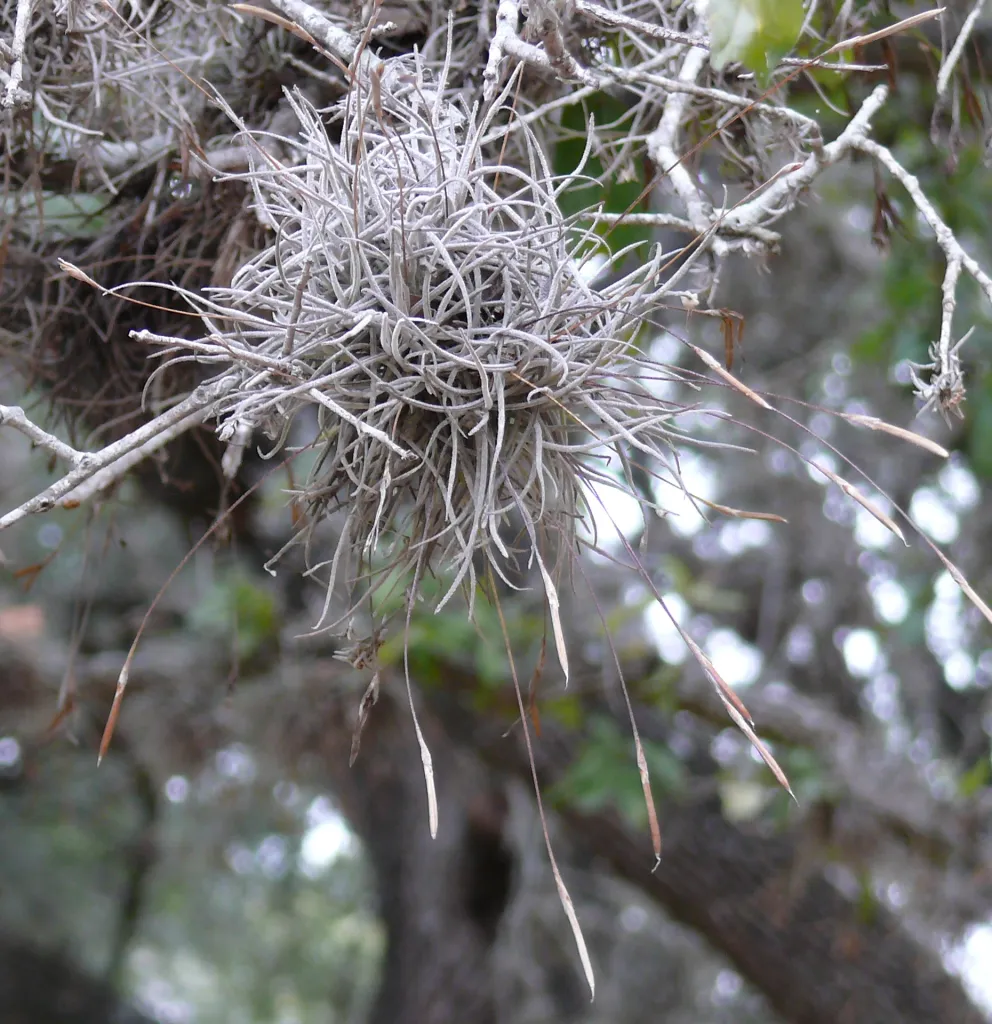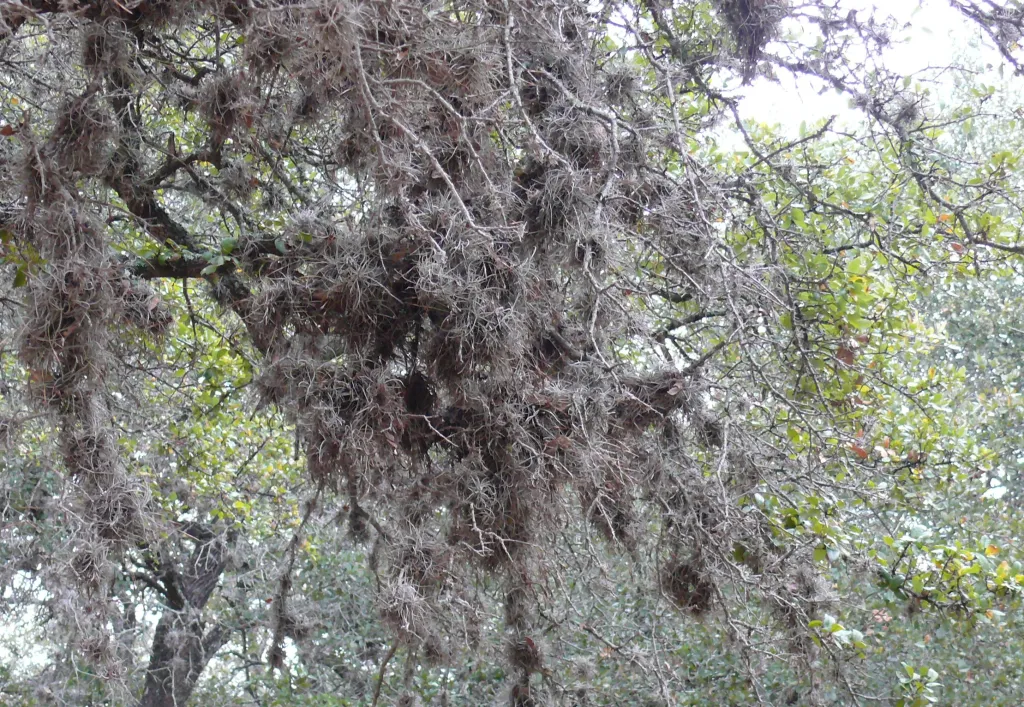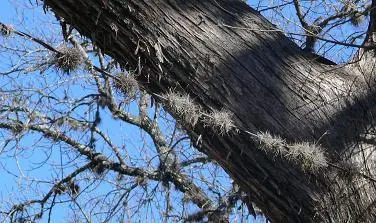Author: Bill Ward
My good buddy J. W. Pieper recently asked me to please write a column on ball moss. J. W. frequently leads nature walks at Honey Creek State Natural Area, and he thinks that the thing people on his trips are most confused about is ball moss. This is the little “mossy” plant that grows as gray clumps on the branches of oaks and other trees and bushes.

The common assumption is that ball moss is a parasite, sapping the strength out of the trees on which it grows. Besides that, some people think heavy infestations of ball moss will cause a tree to decline because leaves can’t get enough light. These ideas seem to be encouraged by tree trimmers, but the botanists I know think there is no evidence to support those fears.
Ball moss commonly grows as an epiphyte (non-parasitic plant living on other plants), similar to many other bromeliads as well as orchids, ferns, and lichens. In this area, ball moss especially favors the shady habitat of the lower and interior limbs of live oaks. Ball moss anchors its pseudo-roots into the bark, but derives no nutrients from the tree. It lives by absorbing water and nutrients from the atmosphere.

Limbs heavily infested with ball moss may break off under the added weight, especially during rains or wind storms. Usually these fallen branches are dead or dying, leading some people to conclude that the ball moss had killed the limbs. In live oaks, however, interior branches tend to die from lack of sunlight, whether there is any ball moss or not.
The fact that ball moss can survive on utility lines, fences, rocks, and other non-plant substrates proves that this plant is not parasitic. However, some people think there are other ways that ball moss may do harm to trees. Among them is my friend John Millsaps.
John has observed ball moss infestations in oaks and Texas persimmons for many years, and he is convinced that ball moss can weaken and perhaps kill trees. He notes that ball moss fastens itself with tendrils that encircle the stems and branches on which it grows. In time, the tendrils tighten their grip and reduce circulation in the host plant. In addition, John believes heavy growths of ball moss retard bud development.

Whether or not ball moss does harm to the host trees and bushes, this bromeliad does have its benefits. For one thing, ball moss fixes nitrogen from the atmosphere and eventually adds it to the soil. For another thing, clumps of ball moss harbor little bugs which are food for several kinds of small birds.
Also in regard to birds, one time I watched four Carolina wren fledglings leave their nest. It was late in the day, and I wondered if they would survive the night. Just as the sun was setting, all four disappeared into a large clump of ball moss on an oak branch, still together and hidden from the world.
Ball moss even has commercial value. In his younger years, Steve Lowe, Kendall County Park Naturalist, used to sell ball moss to the Michigan Bulb Company in Ann Arbor for ten cents a clump. Steve didn’t say whether he made money on both ends of that transaction, but many in Texas would have paid to get rid of what people in Michigan were buying.
Most likely ball moss does no harm to healthy trees, except makes the trees unsightly in many people’s eyes. However, what makes an oak tree ugly to some, may give the tree character to others. I look at ball moss as another interesting native plant that has its niche in the local ecosystem. I’m sure certain birds appreciate that attitude, even if the many tree trimmers who stop at our house shake their heads in disbelief.
